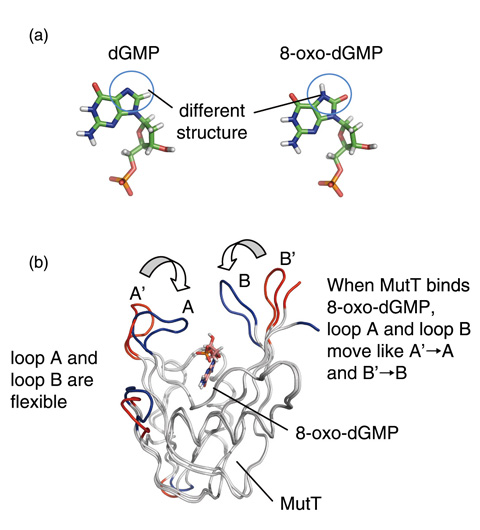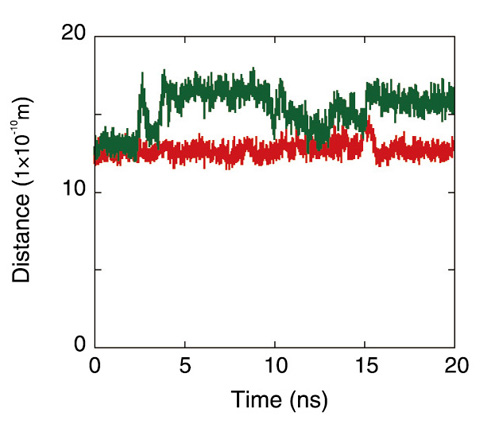
Fig.8-18 Structure of dGMP, 8-oxo-dGMP, and MutT

Fig.8-19 Time dependence of the distance between the tips of loop A and loop B
Radiation can induce oxidization damage in nucleotides. Oxidized nucleotides cause strong mutagenesis when they are erroneously incorporated into nucleic acid. MutT carries out its enzymatic function of removing oxidized nucleotides from the nucleotide pool before incorporation.
An example of an oxidized nucleotide is 8-oxo-dGMP. Its chemical structure does not differ significantly from that of the non-damaged nucleotide, dGMP (Fig.8-18(a)). An enzyme generally binds strongly to a substrate when both structures fit each other. It is difficult for an enzyme to distinguish between the similar structures of the substrates; hence, MutT binds both 8-oxo-dGMP and dGMP because of their similar structures. However, 8-oxo-dGMP is bound far more strongly than dGMP. How can the large difference in the binding constants arise from the small difference in the chemical structures?
A comparison of the substrate-free and 8-oxo-dGMP-bound X-ray crystal structures reveals a remarkable difference. Two loops surrounding the substrate binding site are closed in the complex with 8-oxo-dGMP, whereas they are open in the substrate-free structure (Fig.8-18(b)). On the basis of this, we conducted a molecular dynamics simulation of the 8-oxo-dGMP-MutT and dGMP-MutT complexes.
The results for the 8-oxo-dGMP-MutT complex showed that the closed structure is more stable, and the structural fluctuations are small. On the other hand, two loops are open in the dGMP-MutT complex, and the closed structure is unstable (Fig.8-19). More specifically, when a hydrogen bond, which plays a crucial role in maintaining the closed substrate in the 8-oxo-dGMP-MutT complex, is absent in the dGMP-MutT complex, the closed structure is no longer maintained. This study revealed the molecular mechanism distinguishing the oxidized nucleotide from the normal nucleotide. MutT removes the oxidized nucleotide effectively using this mechanism. In this way, an understanding of the molecular mechanisms of DNA repair plays an important role in the investigation of biological responses to radiation.